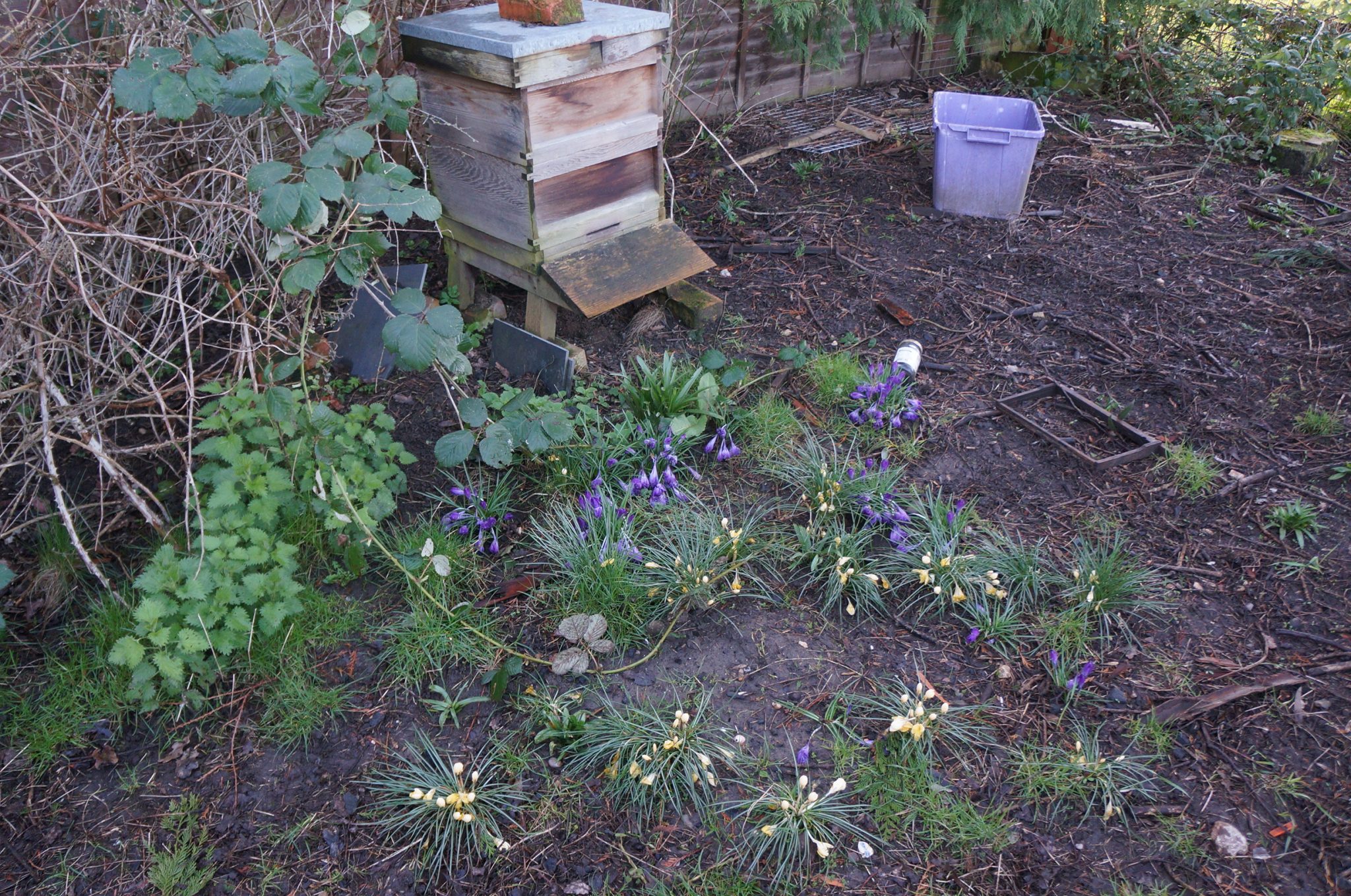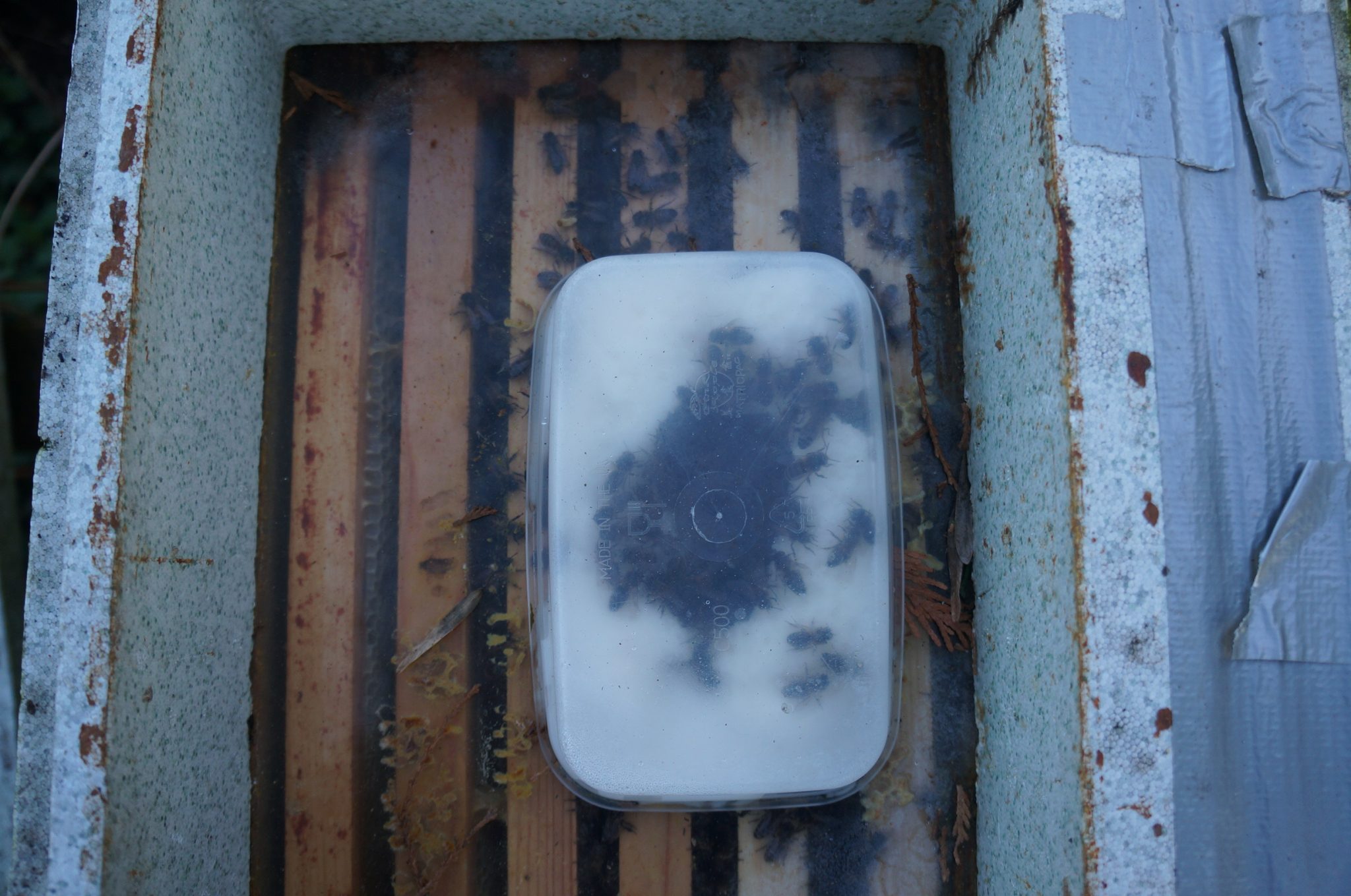 Abraham Lincoln
If given the truth, the people can be depended upon to meet any national crisis...
Abraham Lincoln
If given the truth, the people can be depended upon to meet any national crisis...
 Guildford news...
for Guildford people, brought to you by Guildford reporters - Guildford's own news service
Guildford news...
for Guildford people, brought to you by Guildford reporters - Guildford's own news service
Beekeeper’s Notes: It’s The End Of The World As We Know It?
Published on: 1 Mar, 2020
Updated on: 1 Mar, 2020
Hugh Coakley keeps bees in Worplesdon
I read recently that a ‘splatometer’ test in Denmark, a survey of insects hitting the car windscreen, showed an 80% decline in abundance since 1997. A similar survey in Kent showed a 50% decrease since 2004. And I wrote about the ‘windscreen test’ a couple of years ago in The Dragon.
If it is true and actually reflects a loss in insect volumes, it really is the end of the world as we know it. You can’t lose up to 80% of insects, the lower end of the food chain, and things remain unchanged.

Spring flowers are out and the bees are flying whenever they can. But they don’t like the wet and windy weather we are having.
Even if it was only 10%, it would still be horrendous in such a short time. But 50% to 80% is frightening.
But like the REM song, I feel fine. But is that half the problem?
We read that we are in the 6th mass extinction phase but our houses are comfortable and warm, we are well fed, health care has never been better. We see a rise every year in what we produce and we can talk to our families instantly around the world on WhatsApp, which now has a quarter of the world’s population registered.
So I feel fine.
Confirmation bias says that we do not see the obvious if we don’t like it. Maybe the way the world is largely not reacting to the climate crisis is a good example.

I’m still feeding the small colony I made up from two swarms late last season. They seem to be doing ok.
If our food supply reduced by 50%, there would be insurrection, riots in the street, parliament overthrown and war between the haves and have nots. But up to 80% of insects disappearing is hardly worth a mention.
We’ve been reading about climate change and biodiversity loss for so long now, somehow it doesn’t seem real. I don’t watch the nature programmes any more. It’s a bit like the mad soothsayer in Frankie Howerd’s Up Pompei crying “Woe, woe and thrice woe” and getting completely ignored.
But however you look at it, losing insects at such a rate really is a threat to our very existence.
Responses to Beekeeper’s Notes: It’s The End Of The World As We Know It?
Leave a Comment Cancel replyPlease see our comments policy. All comments are moderated and may take time to appear.

"Found any?" - "Nope, it all looks green to me!" (See Opinion: The Future is Congested, the Future is Grey)
www.abbotshospital.org/news/">





Recent Articles
- Latest Evidence in Sara Sharif Trial
- Ash’s New Road Bridge Is Named – and November 23rd Is Opening Day
- Class A in Underwear Leads to Jail Sentence
- Historical Almshouse Charity Celebrates Guildford in Bloom Victory
- Notice: Shalford Renewable Showcase – November 16
- Firework Fiesta: Guildford Lions Club Announces Extra Attractions
- Come and Meet the Flower Fairies at Watts Gallery
- Updated: Royal Mail Public Counter in Woodbridge Meadows to Close, Says Staff Member
- Letter: New Developments Should Benefit Local People
- Open Letter to Jeremy Hunt, MP: Ash’s Healthcare Concerns


Recent Comments
- Paul Spooner on Ash’s New Road Bridge Is Named – and November 23rd Is Opening Day
- Harry Eve on Opinion: The Future is Congested, the Future is Grey
- Nigel Keane on Letter: New Developments Should Benefit Local People
- Nathan Cassidy on Updated: Royal Mail Public Counter in Woodbridge Meadows to Close, Says Staff Member
- T Saunders on Opinion: The Future is Congested, the Future is Grey
- Jim Allen on Updated: Royal Mail Public Counter in Woodbridge Meadows to Close, Says Staff Member
Search in Site
Media Gallery
Dragon Interview: Local Artist Leaves Her Mark At One of England’s Most Historic Buildings
January 21, 2023 / No Comment / Read MoreDragon Interview: Lib Dem Planning Chair: ‘Current Policy Doesn’t Work for Local People’
January 19, 2023 / No Comment / Read MoreA3 Tunnel in Guildford ‘Necessary’ for New Homes, Says Guildford’s MP
January 10, 2023 / No Comment / Read More‘Madness’ for London Road Scheme to Go Ahead Against ‘Huge Opposition’, Says SCC Leader
January 6, 2023 / No Comment / Read MoreCouncillor’s Son Starts Campaign for More Consultation on North Street Plan
December 30, 2022 / No Comment / Read MoreCounty Council Climbs Down Over London Road Works – Further ‘Engagement’ Period Announced
December 14, 2022 / No Comment / Read MoreDragon Interview: GBC Reaction to the Government’s Expected Decision to Relax Housing Targets
December 7, 2022 / No Comment / Read MoreHow Can Our Town Centre Businesses Recover? Watch the Shop Front Debate
May 18, 2020 / No Comment / Read More







Jim Allen
March 1, 2020 at 11:08 am
On the vein of insect v windscreen, I remember back around 1970 when I worked part-time in a garage, the owner had a Bentley and it took me over an hour to clean the fly swats of the wind screen.
I don’t remember ever doing that in the 200,000 + miles I travelled by road for work.
I haven’t had to clean any off at all since being retired.
Neonicotinoids have a lot to do with it and of course the need for straight bananas and cucumbers and perfectly round apples and tomatoes.
John Lomas
March 1, 2020 at 4:19 pm
The design changes from near vertical windscreens to ones that slope at close on 45 or even 30 Degrees from the horizontal coupled with smoother airflow over the front grill and bonnet, must also have something to do with it.
Julia Shaw
March 1, 2020 at 4:49 pm
I agree this is frightening.
Dave Middleton
March 1, 2020 at 8:44 pm
I suspect, as John Lomas has pointed out, that the much more aerodynamic profile of more modern cars, that allows the air, and therefore the insects in it, to flow over and around the car has more to do with it than any supposed massive reduction in insect population.
I have to say, as a motorcyclist, I haven’t noticed any significant reduction in the number of dead flies on the visor of my crash helmet, or the screen of my motorcycle’s fairing.
Harry Eve
March 2, 2020 at 8:43 pm
Vehicular insecticide numbers are only one indication of what has been happening.
Habitat loss, in all its forms, from intensified agriculture using chemicals and fertilisers to increasing urban sprawl and mowing just to be “tidy” are the most likely causes. The last time I asked the council about their use of chemical weedkillers they were still using them. Light pollution is another factor to consider.
Gardeners can do their bit to help the situation by embracing wildlife gardening. That will help birds that feed on invertebrates.
Climate change has a mixed effect with some species colonising from warmer climates and others retreating northwards. In the case of the once-common Wall butterfly, researchers think that slightly warmer conditions have led to an attempt to produce a third generation in the year. This generation fails to survive the winter and the butterfly has disappeared from Surrey.
Jules Cranwell
March 7, 2020 at 12:03 pm
It doesn’t help that GBC has allowed Lollesworth Fields in West Horsley to be developed. This is where a local bee keeper has his hives.